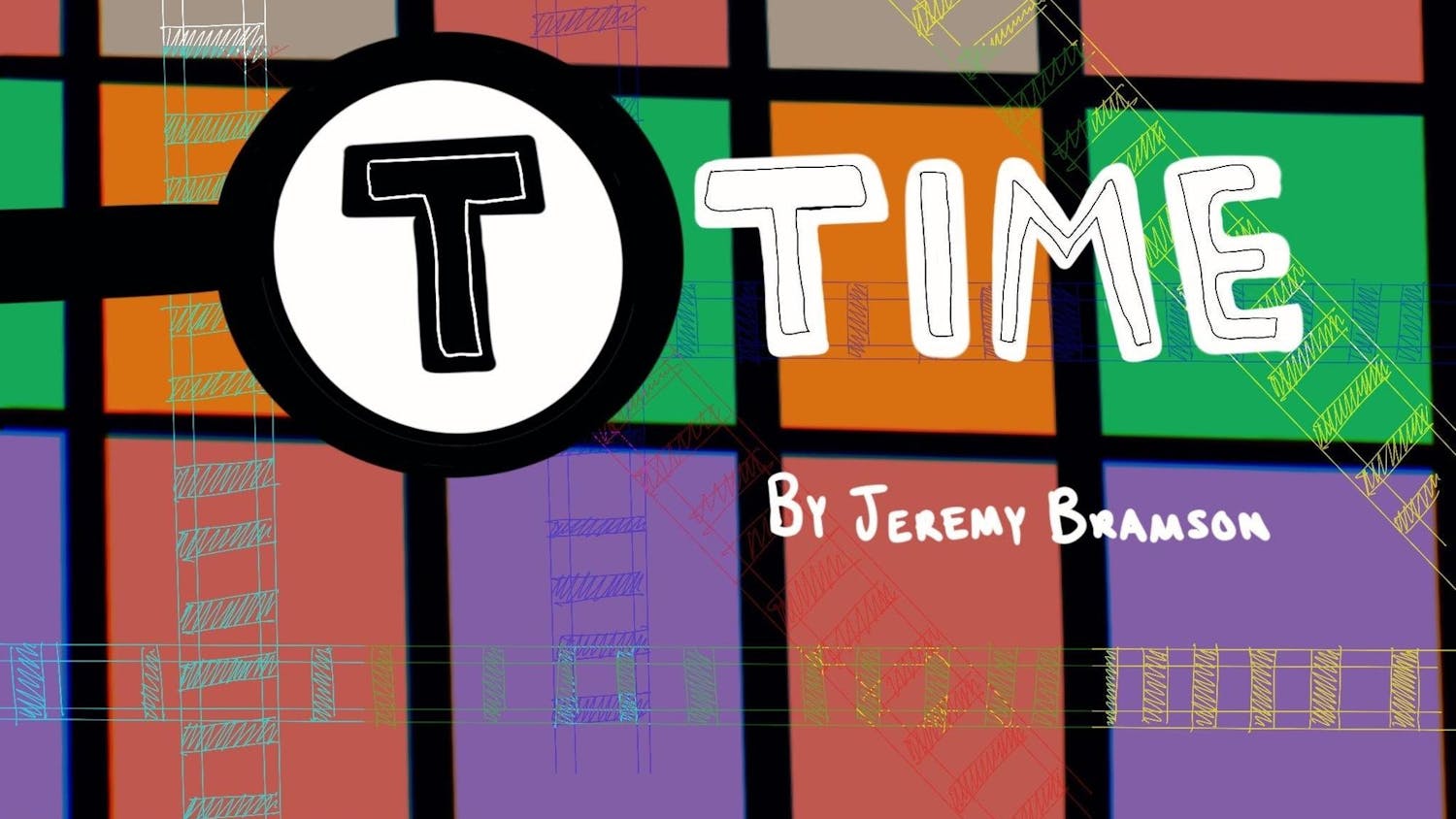Editors notes: This series was reported by The Tufts Daily’s Investigative Team. Reena Karasin and Cathy Perloff contributed reporting.
This is the first segment of a four-part series exploring the past, present and future of activism at Tufts.
Tufts made national headlines in May 2015 when students from Tufts Labor Coalition (TLC) staged a five-day hunger strike to protest the university’s plans to lay off up to 35 janitors. The action was the culmination of tensions between TLC and the central administration that had stretched throughout the academic year.
Tufts holds a reputation for harboring passionate activists, and many students interviewed for this series cited that reputation as part of their decision to attend Tufts. But actions like the 2015 hunger strike underline the friction between activists and the administration that has been present for decades.
From a 2015 Tufts Climate Action (TCA) sit-in that landed six students on Disciplinary Probation II to May 2016 demonstrations protesting continually increasing tuition hikes, increased student action has resulted in heightened tensions. In an effort to improve relations with the activist community, Dean of Student Affairs Mary Pat McMahon told the Daily her office has plans to launch a working group to clarify university policy around demonstrations.
Why student concerns often lead to organized action
Student activists interviewed for this series, who represent a variety of different activist groups on campus, all echo the same complaints: The university often refuses to engage cooperatively with student groups that are critical of university policy until a public, attention-grabbing action is staged -- and that even if the action is successful in eliciting a university response, it can be disingenuous, slow and ineffective.
TLC member Nicole Joseph explained that the 2015 hunger strike was not an isolated protest, but rather an attempt to gain the attention of administrators who were dismissive of the group's concerns during a series of conversations with Executive Vice President Patricia Campbell’s office that took place in the months leading up to the hunger strike. There were 12 meetings, Campbell said.
According to Joseph, a junior, the meetings themselves were the result of a TLC occupation of the Coolidge Room in Ballou Hall in December 2014.
Joseph, who is also involved in Students for Justice in Palestine (SJP) as well as many other student activist groups on campus, said unproductive meetings are par for the course when it comes to negotiating with administrators.
“My experience in meeting with administrators is that they do a lot of talking in circles and trying to appease you to a point where you say, ‘Oh, something will come out of this,’ but it really just gives them credibility to say they did something,” she said.
Campbell told the Daily that while the meetings did not result in TLC’s demands being met, she felt that the university had given careful consideration to the group’s concerns.
“It isn’t that they weren’t heard, but whatever those demands were, they were not something we agreed with them on,” she said.
TLC’s experience in these meetings led the group to believe more extreme action would be needed to save the 35 janitors’ jobs.
However, Joseph said the hunger strike did not result in administrators reaching out to discuss their demands further. Other than Tufts University Police Department (TUPD) officers fencing in the protestors’ campsite and former Executive Director of Public Relations Kim Thurler requesting that the students “be mindful of their health and safety,” the administrators who the strike was directed toward — namely, those in Campbell’s office — did not reach out to TLC for the first three days of the five-day hunger strike, according to Joseph.
“No meeting, no response, no comment, nothing. They didn’t even contact us,” Joseph said. “I was pretty shocked about that.”
University administrators say that these extreme actions are not an effective way of communicating with them.
“There wasn’t going to be an offer [to discuss TLC’s demands during the hunger strike],” Campbell said. “A hunger strike is not the way to engage with us in a conversation, so our primary concern was for their welfare and health.”
Campbell recognized tensions between the university and activist groups, but cited overly disruptive student action as one of the main causes.
“There are certain policies or rules or expectations in our community that, if our advocates want to be treated respectfully, they should do that in turn and treat the community respectfully,” Campbell said.
Cassie Barnhardt, a professor of educational policy and leadership studies at the University of Iowa, said this is a common pattern for activists at universities around the country.
"Intensity keeps elevating until somebody pays attention to it,” she told the Daily. “So what you see is that oftentimes activists will become more antagonistic, to the extent that they don’t feel campus administrators are actually attempting to address them.”
TCA member Shana Gallagher said that in her experience, it has been extremely difficult to secure meetings or conversations with administrators without first staging a protest or some other action deemed disruptive by the university.
“Any meetings we’ve had with [Chair of the Board of Trustees] Peter Dolan, the [Climate Change] symposium, it all came after student action,” she said. “So when collaboration is presented to us as an option and it seems like it will be productive, then we take that option, but when it’s not, that’s when we have to move toward other means of public pressure and protests in order to make sure those meetings even come about.”
Gallagher, a senior, cited TCA’s occupation of University President Anthony Monaco’s office in the spring of 2015 as one example of how poor communication, as well as a disconnect between the urgency felt by activists and administrators over certain issues, led the group to feel that the sit-in was the only way to catch the attention of administrators like Campbell.
In a series of emails spanning from April to October 2014, Gallagher had attempted to communicate with Campbell’s office to express her interest in participating in the newly created Sustainability Fund. Her emails, which were provided to the Daily by Gallagher and made public during her successful appeal trial to lessen the disciplinary measures incurred as a result of the sit-in, received only one 20-word response.
Campbell, however, said the university had made efforts to include TCA in sustainability efforts that resulted from the Sustainability Council’s 2013 report.
“I can’t accept that we didn’t meet with them,” Campbell said. “We put students on a committee. I have another committee that’s a sustainable investment fund, I have students participating in that committee with trustees and administration.”
TCA members, along with student activists in general, say that the measures put forth by administration don’t effectively address the issues, lack transparency to the student body and are designed to placate students and delay university action.
The Sustainability Fund itself was dismissed by some TCA members as a measure to placate them following the Divestment Working Group’s rejection of complete divestmentfrom fossil fuel companies earlier that year.
Campbell said the university had listened to TCA members’ demands, and said the group’s complaints stemmed from frustration over the university’s unwillingness to budge on the issue of divestment.
“One of the issues where we really do have disagreement is on divest,” she said.
Gallagher said that while she recognizes administrators may not be intentionally adversarial, there is a sense that the university’s profit margin and desire to avoid controversy is prioritized over student needs and wishes.
“I understand that it’s difficult in terms of the administrative perspective to sort of consolidate [turning a profit] with the rhetoric of trying to promote positive student traits like passion or protest,” she said. “Obviously Tufts is a school with a big social justice ethos, so I think it’s even harder for students to come to terms with … It definitely is upsetting to me personally that Tufts doesn’t see it as more of a priority to take on some of the issues that student activists really care about.”
As activism involvement increases, Tufts looks to improve relations
Like many liberal arts colleges across the country, Tufts encourages active citizenship in official university rhetoric, arguing that passion for bringing about change is an essential part of becoming an active citizen.
But what happens when that passion is turned on Ballou?
“Tufts’ mission is to promote active citizenship in its student body, and it just very much feels like the administration doesn’t live up to that standard it’s set for itself,” senior Brian McGough, a member of TCA, said. “There’s this dissonance between what they say they’re doing and what they’re actually doing.”
This perceived misalignment might become even more problematic for the university in the coming years. According to a survey by the UCLA Chronicle of Higher Education, 8.5 percent of the nationwide class of 2019 said there was “a very good chance” they would participate in a protest, the highest level recorded for this item since the survey started in 1966. In few places is this trend toward greater social consciousness clearer than at Tufts, where student activist efforts are frequent, ambitious and polarizing.
According to a survey conducted by Tufts Enigma in January 2016, over 13 percent of the student body are “regular members” of political or activist organizations, while another 7.7 percent of students say they support on-campus political action.
McMahon said in an October 2016 interview that her office is working to be better prepared to meet the needs of a student body that is increasingly active and demanding of the university.
“This is a unique time in the volume and coordination of student energy around these things,” she said. “I think it should be seen as a call for structural reimagining of how we address different endemic things … thinking as a structural institution, how are departments and functions defined, and how do we think of them in a way that allows us to collaborate and address things in a different way?”
Increasing student involvement in activist groups and causes has prompted the Office of Student Affairs to explore creating a working group to review the existing Policy on Gatherings, Demonstrations, Protests and Disturbances and to improve the campus understanding of them, according to McMahon.
Tufts’ Communications and Media Specialist Mickey Toogood, who served as Judicial Affairs Administrator until Jan. 3, wrote in an email to the Daily that while the working group is not a response to a specific incident, it is a culmination of “ongoing discussions … with a number of students and student organizations.”
The fact that this effort to improve the university’s relationship with student activists is coming from the Office of Student Affairs is not surprising — according to students and administrators, this office has been especially helpful in addressing student complaints about campus life.
McMahon said that this dynamic might be a result of the unique role of her office on campus, which is to deal directly with students.
“My world is different than other administrators. My function at the university is to support the student experience,” she said. “My ability and framework around the student voice … is shaped by that. More so than a lot of other people, where it’s not as core to their job function.”
Student activists who spoke to the Daily for this story agreed that McMahon and her office have been the most receptive to criticism and typically offered more opportunities for cooperation and discussion.
“When Mary Pat came to Tufts, the first thing she did was realize that students were tremendously upset by the sexual misconduct problems happening at Tufts and the administrative responses to it, so she made an effort to meet students and to put us all in one room in the campus center and hear us,” senior Allyson Blackburn, a member of Tufts Action for Sexual Assault Prevention, recalled. “It meant a lot to have her listen, which was not at all something I was accustomed to from administrators.”
Activism at Tufts Part I: As campus activism intensifies, tensions between student groups and administrators grow

Five Tufts students, reportedly arrested in Powderhouse Square for obstructing traffic during a protest, are kept to the side on Thursday, April 30, 2015.





